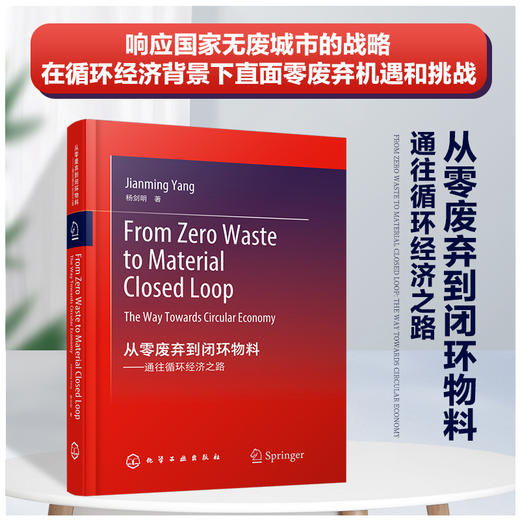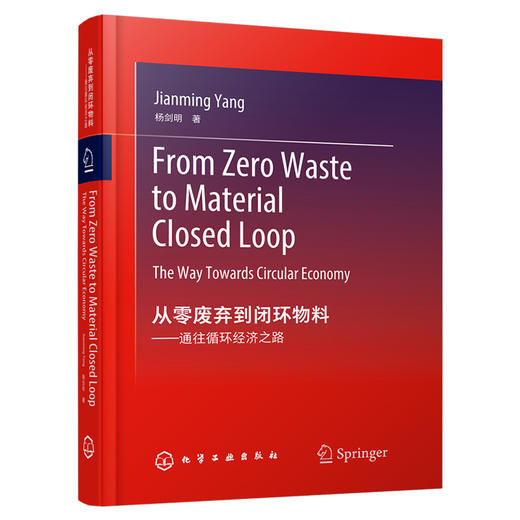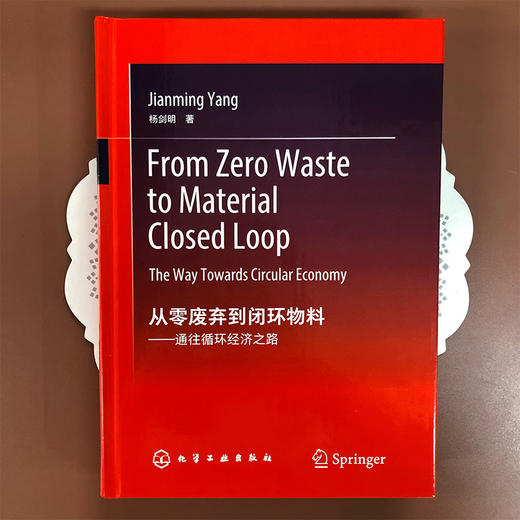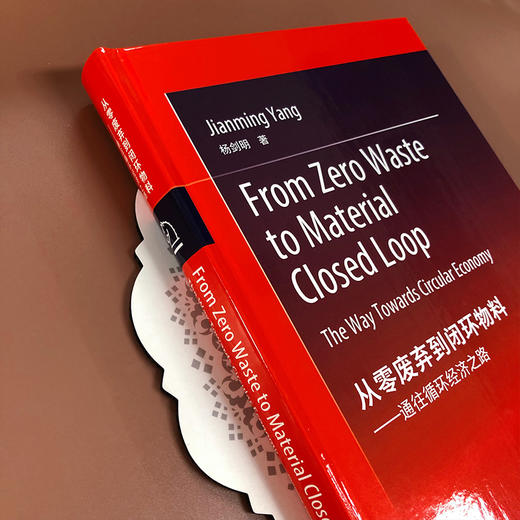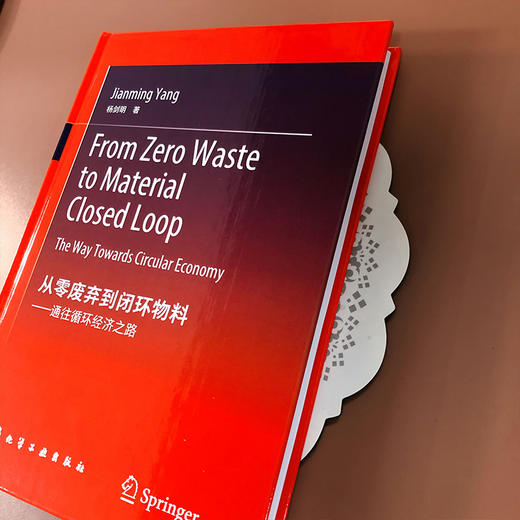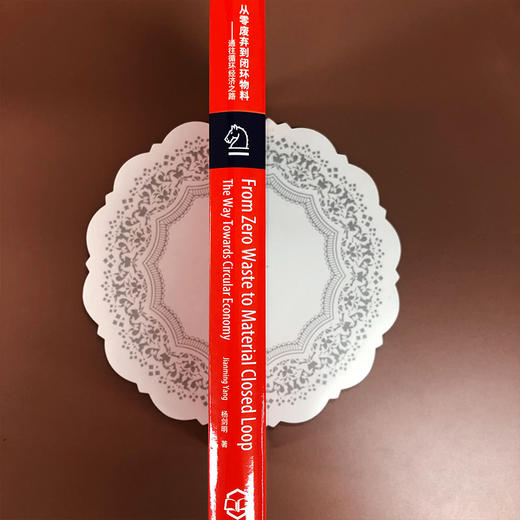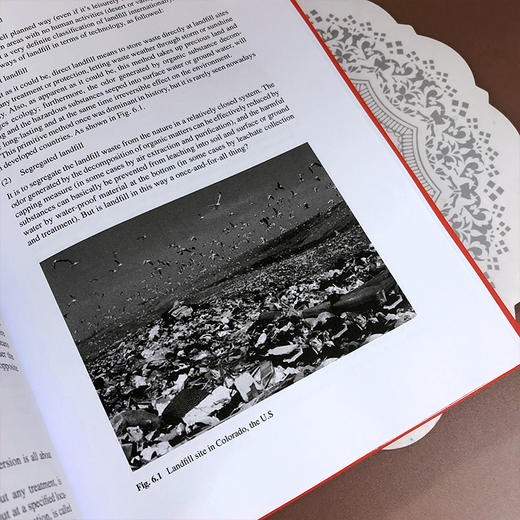从零废弃到闭环物料:通往循环经济之路(From Zero Waste to Material Closed Loop: The Way Towards Circular Economy)
| 运费: | ¥ 0.00-12.00 |
商品详情
书名:从零废弃到闭环物料——通往循环经济之路(From Zero Waste to Material Closed Loop: The Way Towards Circular Economy)
定价:148.0
ISBN:9787122411686
作者:杨剑明,,著
版次:第1版
出版时间:2022-08

内容提要:
本书是《从零废弃到闭环物料——通往循环经济之路》的英文版,共分14章,从废弃物的来源、形态、种类开始,介绍了其管理、转化和处理处置技术,在此基础上引入了“零废弃”的理论与实践,并进一步介绍了与零废弃相关的绿色设计、逆向物流和闭环物料。通过不同行业面临的零废弃机遇和挑战,阐述了循环经济这一重要发展概念,并从3个层面讨论了循环经济的标准与认证。最后从哲学与环境伦理学的角度对零废弃做了简单解读。书后附有美国、欧洲及中国颁布的废弃物相关标准列表,供读者参考。
本书内容丰富,涉及了零废弃的方方面面,语言流畅易懂,理论与实践并重。可供与清洁生产、循环经济相关企事业单位中从事环境管理工作的专业人员参考,也可供高等学校环境类、生态类专业师生参阅。
作者简介:
杨剑明,作为环境项目经理和环境科学家,先后供职于世界500强不同行业企业,从事环境管理和环境科学研究相关工作,同时具有重大工程建设项目经验。于华东理工大学获得环境工程学士学位、于法国国立米卢斯高等化学学院获得环境与安全工程硕士学位、于法国上阿尔萨斯大学风险与环境管理实验室获得环境化学博士学位。目前受聘于华东理工大学资源与环境工程学院作为工程硕士企业导师,并为该院硕士研究生教授相关专业课程。学术兼职包括全国电工电子产品与系统的环境标准化技术委员会(SAC/TC297)委员和中国环境诱变剂学会毒性测试与替代方法专业委员会委员等。
目录:
"1 A Brief History onWaste 1
2 Waste Morphology and Types 5
2.1 Off-Gas 5
2.2 Effluent 7
2.3 Rubbish 8
3 Thermodynamic Principle for Waste 9
4 Mass Balance and Unorganized Emission 13
4.1 Mass Balance 13
4.2 Unorganized Discharge 16
5 Waste Management 19
5.1 International Conventions 19
5.2 International Standards 21
5.2.1 ISO 22
5.2.2 IEC 22
5.2.3 ITU 23
5.3 National Laws and International Organization Laws 23
5.3.1 The United States 23
5.3.2 The European Union 24
5.3.3 China 24
5.4 National Standards and International Organization Standards 26
5.4.1 The United States 26
5.4.2 The European Union 27
5.4.3 China 28
5.5 Industry Standards and Local Standards 28
6 Waste Diversion 31
6.1 Diversion Strategy 31
6.2 DiversionMethod 32
6.2.1 Landfill 32
6.2.2 Incineration 35
6.2.3 Elimination 37
6.2.4 Reuse 38
6.2.5 Reduction 39
6.2.6 Recycling 39
6.2.7 Aerobic Composting 41
6.2.8 Anaerobic Digestion 42
6.2.9 Biofuel 43
6.2.10 Repairing 43
6.2.11 Refurbishment 45
6.2.12 Remanufacturing 46
6.2.13 Conclusion 47
7 Waste Treatment and Disposal Technology 49
7.1 ChemicalWaste 49
7.1.1 Inorganic Waste Compounds 50
7.1.2 Organic Waste Compounds 54
7.2 ConstructionWaste 58
7.2.1 Management of Construction Waste 58
7.2.2 Sources of Construction Waste 59
7.2.3 Common Disposal Methods of Recyclable Materials 61
7.2.4 Regulations and Examples of Construction Waste Recycling in Various Countries 63
7.3 ElectronicWaste 67
7.3.1 The Hazardous Substances in E-Waste 67
7.3.2 Treatment Technology of E-Waste 69
7.4 MedicalWaste 75
7.4.1 Types and Hazards of Medical Waste 75
7.4.2 Methods of Treatment and Disposal of Medical Waste 77
7.5 KitchenWaste 78
7.5.1 Sources and Types of Kitchen Waste 78
7.5.2 Oil and Water Separation 81
7.5.3 WasteWater Treatment 82
7.5.4 Off-Gas Treatment 82
7.5.5 Solid Waste Treatment and Resource Recovery 83
7.6 LaboratoryWaste 84
7.6.1 Laboratory Off-Gas 84
7.6.2 Laboratory Waste Water 86
7.6.3 Laboratory Solid Waste 87
7.7 SecondaryWaste 89
7.7.1 Sources and Characteristics of Secondary Waste 89
7.7.2 Municipal Sludge 90
8 Zero Waste Theory and Practice 103
8.1 Chemical Industry 103
8.1.1 Green Chemistry 103
8.1.2 Treatment Process Selection 105
8.2 Machinery Industry 107
8.2.1 Industry Characteristics 107
8.2.2 Corresponding Measures 108
8.3 Automotive Industry 109
8.3.1 Source of Generation 110
8.3.2 Zero Waste Opportunities 112
8.4 Consumer Electronic Industry 115
8.4.1 Industry Characteristics 115
8.4.2 Sources and Streams 116
8.4.3 Stream Analysis 117
8.4.4 ZeroWaste Practices 121
8.5 Retail Industry 123
8.5.1 Industry Characteristics 124
8.5.2 ZeroWaste Practices 128
8.6 Grand Event 133
8.6.1 Characteristics of Grand Events and Their Waste Management 133
8.6.2 Organizational Operations and Zero Waste 135
8.6.3 Zero Waste Requirements at Different Stages 138
8.6.4 ZeroWaste Case Studies 139
8.7 Property and City 143
8.7.1 Unit Property 144
8.7.2 Comprehensive Properties 145
8.7.3 Zero Waste Cities (Waste-Free Cities) 150
8.7.4 Nation-Wide ZeroWaste 156
9 Zero Waste and Eco-Design 159
9.1 Eco-Design System 159
9.2 Design for Disassembly 160
9.2.1 Dismantlable Design Definition 160
9.2.2 Dismantlable Design Criteria 160
9.2.3 Dismantlable Design Evaluation 162
9.3 Design for Recycling 163
9.3.1 Process and Principle of Material Selection 164
9.3.2 Basic Requirements for Selection of Recyclable Materials 165
9.3.3 General Methods for Selection of Recyclable Materials 165
9.3.4 Calculation Method of Recyclability Rate 166
9.4 Design for Maintenance/Repairing 167
9.4.1 Several Definitions of Repairing 167
9.4.2 Considerations in the Process of Repairable Design 167
9.5 Design for Remanufacturing 169
9.5.1 From A to A 169
9.5.2 From A to B 170
9.5.3 Calculation of Remanufacturing Rate 172
9.6 Conclusion 173
10 Reverse Logistics 175
10.1 Definition and Category 175
10.2 Waste Logistics 176
10.3 Logistics Cost 178
10.3.1 Cost Composition 178
10.3.2 Costing 179
10.3.3 Cost Analysis 179
10.3.4 CostManagement 182
10.4 Drive and Development 183
11 Material Closed Loop 185
11.1 Recycling and Closed Loop 185
11.2 Regulatory Supervision 188
11.3 Material Identification 191
11.3.1 Identification Procedures 191
11.3.2 Technical Regulation 193
11.3.3 Identification Standard 195
11.4 Economic Benefit and Environmental Benefit 196
11.5 ZeroWaste, Carbon Neutral 198
12 On Circular Economy 201
12.1 Background and Support 201
12.2 Development Concept 203
12.3 Legal Difference 204
12.4 InnovationModel 206
12.4.1 Commercial Leasing 206
12.4.2 Sharing Economy 207
12.4.3 Cloud Technology 210
12.4.4 Blockchain Technology 212
13 Circular Economy Standard and Certification 215
13.1 Product Circularity 215
13.2 Facility Circularity 221
13.3 Corporate Circularity 222
14 Zero Waste Philosophy and Environmental Ethics 227
14.1 ZeroWaste Philosophy 227
14.1.1 Taoism 228
14.1.2 Confucianism 229
14.1.3 Marxist Philosophy 229
14.2 Environmental Ethics 230
14.2.1 Environmental Ethics Principles 231
14.2.2 The Content of Environmental Ethics 232
14.2.3 Environmental Ethics and Environmental Legal System 233
14.2.4 Case Studies 233
14.3 The Future of Humankind 237
Appendix 239
Epilogue 259
- 化学工业出版社官方旗舰店 (微信公众号认证)
- 扫描二维码,访问我们的微信店铺
- 随时随地的购物、客服咨询、查询订单和物流...
